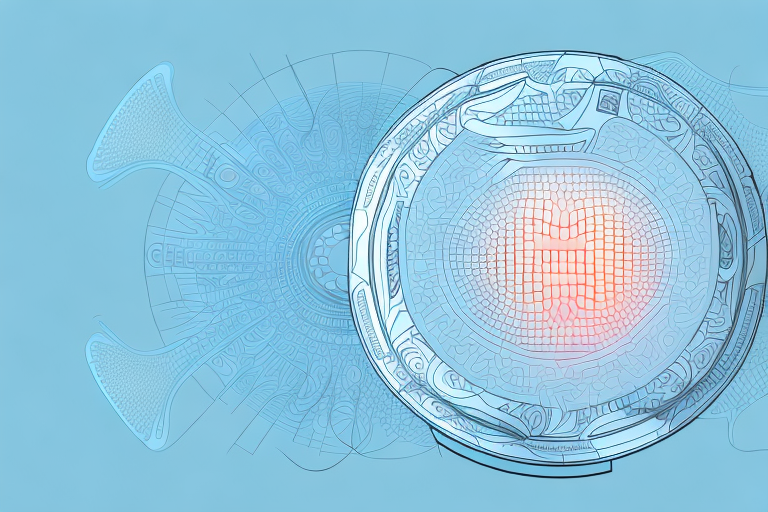If you’re an athlete, individual recovering from an injury, or someone who experiences muscle pain frequently, you may have heard of deep tissue percussion massagers. These are handheld devices that aid in pain relief and muscle recovery, among other benefits. In this article, we will provide you with a comprehensive review of deep tissue percussion massagers, including their benefits, how they work, the available types, factors to consider when choosing one, pros and cons of using them, and tips for using them safely and effectively.
Understanding the Benefits of Deep Tissue Percussion Massagers
Before delving into how deep tissue percussion massagers work, it’s essential to understand the benefits that come with using them. One of the primary benefits is that they help relieve muscle pain, soreness, and tightness in specific areas of the body. They do this by providing deep tissue massage, which reaches the muscles’ deeper layers.
Deep tissue percussion massagers also help with muscle recovery by increasing blood flow to the targeted area. The increased blood flow helps to reduce inflammation, increase mobility, and provide quicker recovery from an injury.
Another benefit of deep tissue percussion massagers is they are useful for managing stress levels. The devices’ vibration helps to ease tension, promote relaxation, and aid in sleep quality.
Additionally, deep tissue percussion massagers can improve athletic performance. By using the massager before a workout, it can help warm up the muscles and increase flexibility, which can lead to better performance and reduced risk of injury. After a workout, the massager can help reduce muscle soreness and aid in recovery, allowing for more frequent and intense training sessions.
How Deep Tissue Percussion Massagers Work
The devices work by delivering rapid, repetitive thumps, or strokes, to the body’s targeted areas. This rapid, percussive motion of the massager reaches deep into the muscles, breaking up knots and releasing tension.
Deep tissue percussion massagers utilize a combination of amplitude (intensity) and frequency (speed) to achieve desirable results. They deploy between 2,400 to 3,600 strokes per minute, delivering the desired intensity and speed to penetrate deep within the body’s muscular structure.
Additionally, deep tissue percussion massagers often come with interchangeable heads that allow for a customizable massage experience. These heads can vary in size and shape, allowing users to target specific areas of the body with precision. Some massagers also come with adjustable speed settings, giving users the ability to tailor the intensity of the massage to their individual needs.
Types of Deep Tissue Percussion Massagers Available in the Market
The market is awash with various deep tissue percussion massagers, making it challenging to choose one. Some have narrow or broad shapes to treat specific parts of the body, while others are designed to massage the general body. Some are cordless, battery-powered, or plug-in models.
Some handheld models resemble power drills and come with attachments for different body areas. Others are smaller, resembling facial cleaning brushes, and are suitable for smaller muscle groups or areas that require greater precision. Whichever type you choose is a matter of preference, but you must choose one that targets specific sore areas and is easy to handle.
It is important to note that some deep tissue percussion massagers come with adjustable speeds, allowing you to customize the intensity of the massage. This feature is particularly useful for individuals with varying pain thresholds or those who prefer a gentler or more intense massage. Additionally, some massagers come with heat therapy, which can help to relax muscles and improve blood circulation. When choosing a deep tissue percussion massager, consider your specific needs and preferences to ensure that you select the best option for you.
Factors to Consider When Choosing a Deep Tissue Percussion Massager
The critical factors to consider when choosing a deep tissue percussion massager include:
- Body Areas to Massage: Do you want to massage specific muscle groups or a general body massage?
- Power Source: Is the device battery-powered, corded, or rechargeable? Consider where you will be using the device and the available power sources.
- Noise Level: Is it a quiet device, or does its operation create a lot of noise? Consider if you will be using the device in shared spaces, such as an office or at home while other people sleep.
- Speed Settings: Different devices come with a varying number of speed settings. Consider which speed settings are appropriate for the type of massage you want.
- Weight: Consider the device’s weight as it affects handling or ease of use, especially if you’ll be holding it for an extended period.
Another important factor to consider when choosing a deep tissue percussion massager is the type of massage heads that come with the device. Different massage heads are designed to target specific muscle groups and provide different types of massage, such as deep tissue or sports massage. Consider which massage heads are included with the device and if they are interchangeable or if you can purchase additional heads separately.
Top 10 Deep Tissue Percussion Massagers in the Market
There are numerous deep tissue percussion massagers in the market. Among the top 10 devices are:
- Theragun G3PRO
- Hyperice Hypervolt Plus
- Athlete Recovery Gun
- TimTam Power Massager
- LifePro Sonic Handheld Percussion Massage Gun
- VYBE PRO Massage Gun
- ELEEELS X1 Pro Massage Gun
- OPOVE Deep Tissue Massage Gun
- Bright Speed Massage Gun
- Addaday BioZoom Jr. Handheld Percussion Massager
Pros and Cons of Using a Deep Tissue Percussion Massager
Like any other tool in the market, deep tissue percussion massagers have their pros and cons.
Pros
- Provide deep tissue massage, reaching muscles’ deeper regions.
- Aids in muscle recovery by increasing blood flow to the targeted area.
- Helps to soothe muscle pain, soreness and tightness.
- Can be used to manage stress levels
- Availability of various types to suit individual preferences.
Cons
- Can be expensive depending on the brand and model.
- Some models may produce noise, which can be a problem in shared spaces.
- May have a steep learning curve for beginners to operate.
Tips for Using a Deep Tissue Percussion Massager Safely and Effectively
For safe and effective usage of a deep tissue percussion massager, consider the following:
- Start gradually: Begin by testing the device on a small part of the body before proceeding to the desired area. This helps your body to adjust to the vibration’s intensity.
- Limit usage time: Do not use the device for more than 15 minutes in one area, as it can lead to bruising or overstimulation.
- Use the device in the right area: Know the areas where using the device is not advisable, such as the neck and spine.
- Do not use on open wounds: Avoid using the device on wounds, bruises, or inflamed parts of your body.
- Consult with a medical professional: Before using the device, consult with a medical professional, especially if you have medical conditions to avoid exacerbating them.
Conclusion
A deep tissue percussion massager can provide immense benefits to individuals wishing to relieve muscle pain, soreness, and tightness. Careful consideration of device type, power source, noise level, speed settings, and weight will ensure the purchase of the right device for your needs. Follow the usage tips shared above to massage your tired muscles safely and effectively, and finally, kick back and relax.





